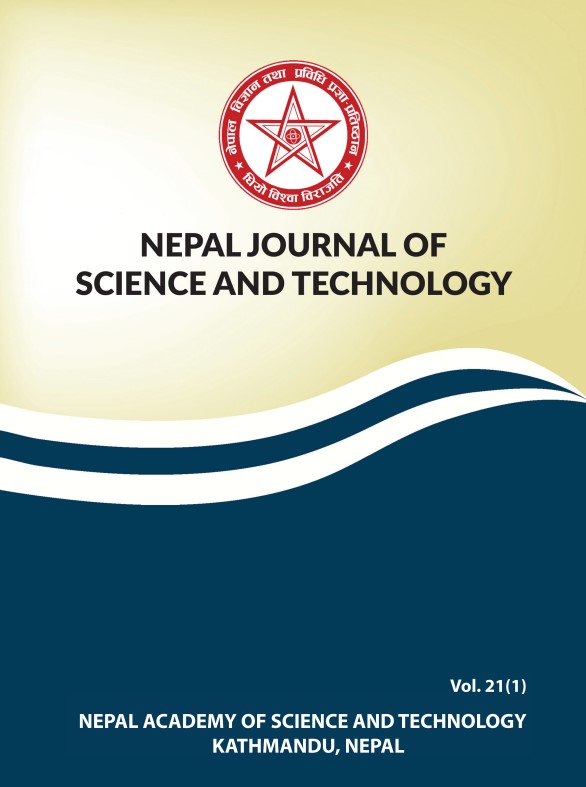A Short-Term Measurement of PM2.5 Concentration During the COVID-19 Lockdown Period in Kathmandu Valley
DOI:
https://doi.org/10.3126/njst.v21i1.49916Keywords:
Air quality, PM2.5, Kathmandu valley, COVID-19, LockdownAbstract
The Government of Nepal implemented a nationwide lockdown from 24 March 2020 to 21 July 2020 to control the person-to-person transmission of COVID-19. This study was conducted in a trafficintensified area of Kathmandu valley, where vehicular movement represents one of the main sources of air pollution. Hence, this study was intended to quantify the concentration of particulate matter (PM2.5) for 11 hours of daytime from 23 April to 20 May 2020. It was also to evaluate the influences of lockdown on air quality. PM2.5 was observed using HAZ-Dust, Environmental Particulate Air Monitor in the 18 different traffic sites of the Kathmandu valley. During the lockdown period, a substantially low mean concentration of PM2.5 ranging from 3.69±1.78 µg/ m3 to 7.58±3.98 µg/m3 was recorded in Kathmandu valley, which reflected improved air quality due to the cessation of vehicular activities. Therefore, the study outcome suggests that controlling the existing vehicular activities and promoting energy-efficient vehicles like electric vehicles in specific locations in the city will improve air quality and benefit public health.
Downloads
Downloads
Published
How to Cite
Issue
Section
License
Copyright (c) 2022 Pawan Kumar Neupane, Sunil Babu Shrestha, Dipesh Rupakheti, Dev Raj Joshi, Tista Prasai Joshi

This work is licensed under a Creative Commons Attribution-NonCommercial 4.0 International License.
Authors retain copyright and grant the journal right of first publication.




